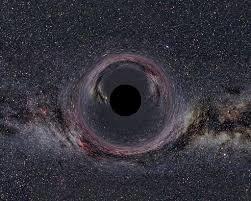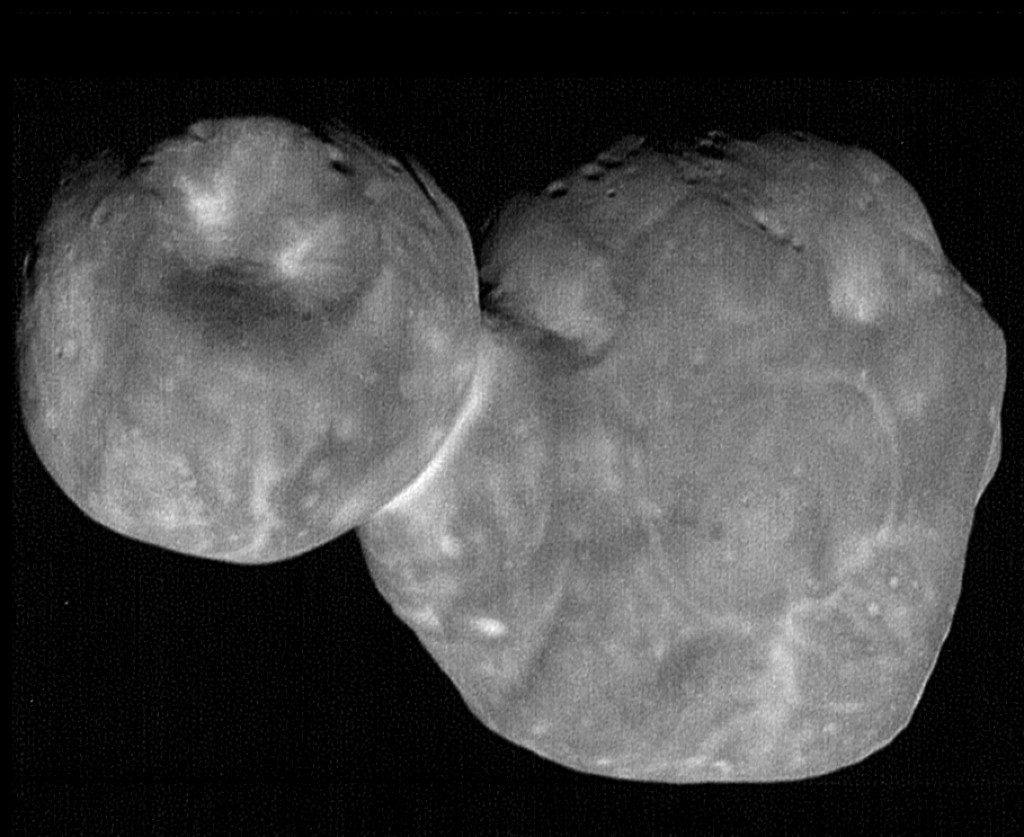Searching the Sky: Another great year for astronomy—Part Two – Benitolink: San Benito County News
This article was contributed by community member David Baumgartner as part of a local series on astronomy.
Back to our astronomical top ten for 2019:
No. 9: The astonishing Andromeda Galaxy
I think almost everyone has heard of the great Andromeda galaxy. This galaxy is not so different than our own Milky Way galaxy which we are a part of. Andromeda is best known for being the farthest object we can see with the unaided eye. Even at that, the light that cast on your eye tonight from Andromeda left that area some 2.2 million years ago. And that is traveling at the speed of light, 186,000 miles per second. Hard to compute, isn’t it?
The amazing thing that happened is that astronomers, after studying this galaxy for years, found out that Andromeda is three times bigger than they thought it was. I can’t tell you exactly how they found that out, because I don’t really know. Maybe they used an astronomical ruler of some sort, in inches or metric. But after their studies they discovered that if the entire disk were visible to the naked eye, Andromeda would appear more than 11 times larger than the full moon. That might not sound like much to you, but when astronomers find out that they have been that far off in size of an object, it makes all the astronomers in the world wonder just how far off they are with everything else that they have been studying.
No. 8: What are exoplanets anyway?
Up to this date, astronomers have discovered thousands of extrasolar planets—these are called “exoplanets,” worlds outside of our own solar system, circling stars other than our sun. And up until May 2005, no one had ever taken an image of one. Then a team of American and European astronomers did just that. Now we have our first picture of a large planet, some five times larger than Jupiter, circling around a star known as “2M1207A” distanced at 170 light years away. The new object is now called 2M1207b. I’m sure that is what I would have called it if I had discovered it. But it does make you wonder, just who might be looking back at us on these planets as we look back at them?
No. 7: The blast from beyond
I’d like to go back in time for this because it still blows my mind how amazing it was. This blast wave has traveled for 50,000 years before it reached us in December 2004. That is when our satellites detected the brightest outburst beyond our solar system ever recorded. The original blast gave off more energy in a tenth of a second than the Sun emits in 100,000 years. Now try to comprehend that one. You may want to read that over again, not that you will understand it any better, but just to feel a little dumbfounded twice in one day. The blast came from a magnetized neutron star called a magnetar. This object is called SGR 1806-20 and lies in the constellation Sagitarius, on the other side of our galaxy. Astronomers have only witnessed two such explosions in the past 35 years.
No. 6: My new 8” telescope
This last year I received my new 8” Ritchey Chretien Telescope, bigger and more powerful than my existing 4” scope.
So you say big deal? What is so exciting about some new telescope compared to these other great happenings of the year? Well, first off, it is bigger and more powerful than what I have now, and we all know that bigger is always better. And next, it can be taken apart so I can transport it much easier by myself, without the help of my friend’s ailing backs. And third, the acquiring of this scope is a very exiting event for me. I feel like a little kid again, like back when I received my first telescope from my mother, I mean from Santa, for Christmas in 19… well, the year really doesn’t matter. So if I want to make a big deal out of this, I can, because remember, this is still my top ten.
No. 5 : Dark side of the moon?
People talk about the dark side of the moon, as if it never receives sunlight. Actually all of the moon’s surface is lightened up by the sun at one time or another. The fact is on Earth we only see the one side of the moon, which we call the near side. The side that we never see is called the far side.
On Jan. 3, China’s Chang’e-4 lander successfully became the first craft to soft land on the far side of the moon and deployed its rover, Yutu-2. A nice way to celebrate the 50th anniversary of the first moon landing back in 1969 by Apollo astronauts. It would be nice if the countries on Earth could work as one to concur as much of the unknown as they are able to. Certainly much more than can be accomplished individually, and I would think less expensive.
No. 4: Black holes, I can’t see it…
In the past we have never actually seen a black hole. We have seen objects pulled in by gravitation once they come too close. And once in never to return. Even light cannot escape. But these holes are black, what is there to see? Scientists have figured out that the black hole can and should cast a shadow. So why not take a picture of one? They did. And sure enough there was the shadow everyone was hoping for cast on the parent galaxy M-87. So our black hole is no longer invisible. Or is it only the shadow knows?

No. 3: Twin space astronauts, but which is which?
Starting from launch in March 2015 to March 2016, astronaut Scott Kelly lived and worked on the International Space Station. All the while his twin brother Mark (also an astronaut) went on with his life on Earth working at NASA’s twin study. Once Scott made his way home the work began. The goal was to learn more about changes humans undergo after living and working long term in space. The study would compare their bodies pre- and post-flight. The study focused on different aspects of human health, such as metabolism, DNA replication, gene expression, cognition, immune response and microbiome. Some of the body’s functions such as immune response to vaccination did not change during spaceflight. But they did notice changes in Scott’s body weight, gene expression, gut microbiome, carotid artery thickness, and even the length of his telomere—the protective caps at the end of DNA strands—among others. You know, I wish NASA had called me before they went to all that trouble , testing and all. I could have enlightened them on all of that info.
No. 2: “A Lethal Asteroid”
One of the most interesting finds for 2004 was a little 1,050-foot long space rock. Not much of a find until you realize that this little rock may just find its way into our space. And then it won’t sound so little when you realize what damage it can do.
Roy Tucker, David Tholen and Fabrizio Bernardi from Kitt Peak, Arizona discovered asteroid 2004 MN, on June 19, 2004. But the object was lost for two days, not long enough to provide a solid orbit prediction. But on December 18, Gordon Garradd of Australia’s Siding Spring Observatory rediscovered it, and after a few calculations found out the possibility of and impact with Earth on April 13, 2029. Actually not that far off in time. And, yes, it is a Friday. Is this the end of the earth, as we know it? Well, let me make you feel a little bit better: after further observations and calculations the odds of impacting the earth were lowered. Wow, that was close!
But wait, this rock just doesn’t seem to want to go away. Now the estimate is a 1 out of 37 odds that the now designated 99942 named Apophis, will hit the Earth.
Well, you say that is much better. But the astronomers estimate a space rock 1,050 feet across has a striking power equivalent to 850 million tons of TNT, or more than four times the energy released when the Indonesian volcano Krakatoa erupted in 1883. If you must know, that is a lot. Most of the othe top ten lists didn’t even have this rock on their top ten. I don’t know, and don’t get me wrong, but if some rock has a chance to rock our world in a disastrous way, I would tend to rank that event very high every year. There remains a slight chance that Apophis will return to strike in 2036. But each time we hear an update on Apophis they lower the odds out even more. And this is just one little rock. There are many more where this one came from. So stay tuned.
No. 1: New Horizons keeps on going…
On the first of January the New Horizons made a big splash to start the year off in 2019. Yes this is the same space craft that flew right by Pluto without stopping yet had the time and the ability to take some great photos of our ninth planet. And yes you are right, I said “planet.” I believe if my eighth grade teacher at Sacred Heart, Sister Saint John, were alive today she would be very upset to hear that Pluto is no longer considered a planet. So the astronomers say. I have no reason to believe that she would be wrong about this. To get right down to it, the word planet is a Greek word for wanderer, because these bodies have a tendency to move around on their own not following the movement of the stars.
I’m sorry I got a little off the subject there. Back to New Horizons. After the spectacular visit by Pluto, New Horizons came upon KBO in the Kuiper Belt object, nicknamed “Ultima-Thule,” at a distance of 2,175 miles. At that location the craft was about 4 billion miles from Earth and 1 billion miles from Pluto. (The Planet) I think the neatest thing about all of this is when New Horizons took pictures of U. Thule it took over six hours for the first image, traveling at light-speed, to reach Earth. Remember, light travels 186,000 miles per second. Take a second to think about that. See that? Light just traveled another 186,000 miles, wow…

Take a look at Venus tonight in the southwestern sky. If you have a telescope you will notice it is a half Venus showing, not unlike our own moon.
Clear skies,
Mr. B.
January Sky Watch
Jan. 20: Moon passes 2° north of Mars at 4:11 a.m.
Jan. 22: Moon passes 0.4° south of Jupiter at 7 p.m.
Jan. 24: New Moon at 1:42 p.m.
Jan. 27: Venus passes 0.08° south of Neptune
Jan. 27: Moon passes 4° south of Neptune at 10 p.m.
Jan. 27: Moon passed 4° south of Venus at 11 p.m.
Jan. 29: Moon is at apogee (251,899 miles from Earth) at 1:27 p.m.
Jan. 31: Moon passes 5° south of Uranus at 7 p.m.
Other related BenitoLink articles:





